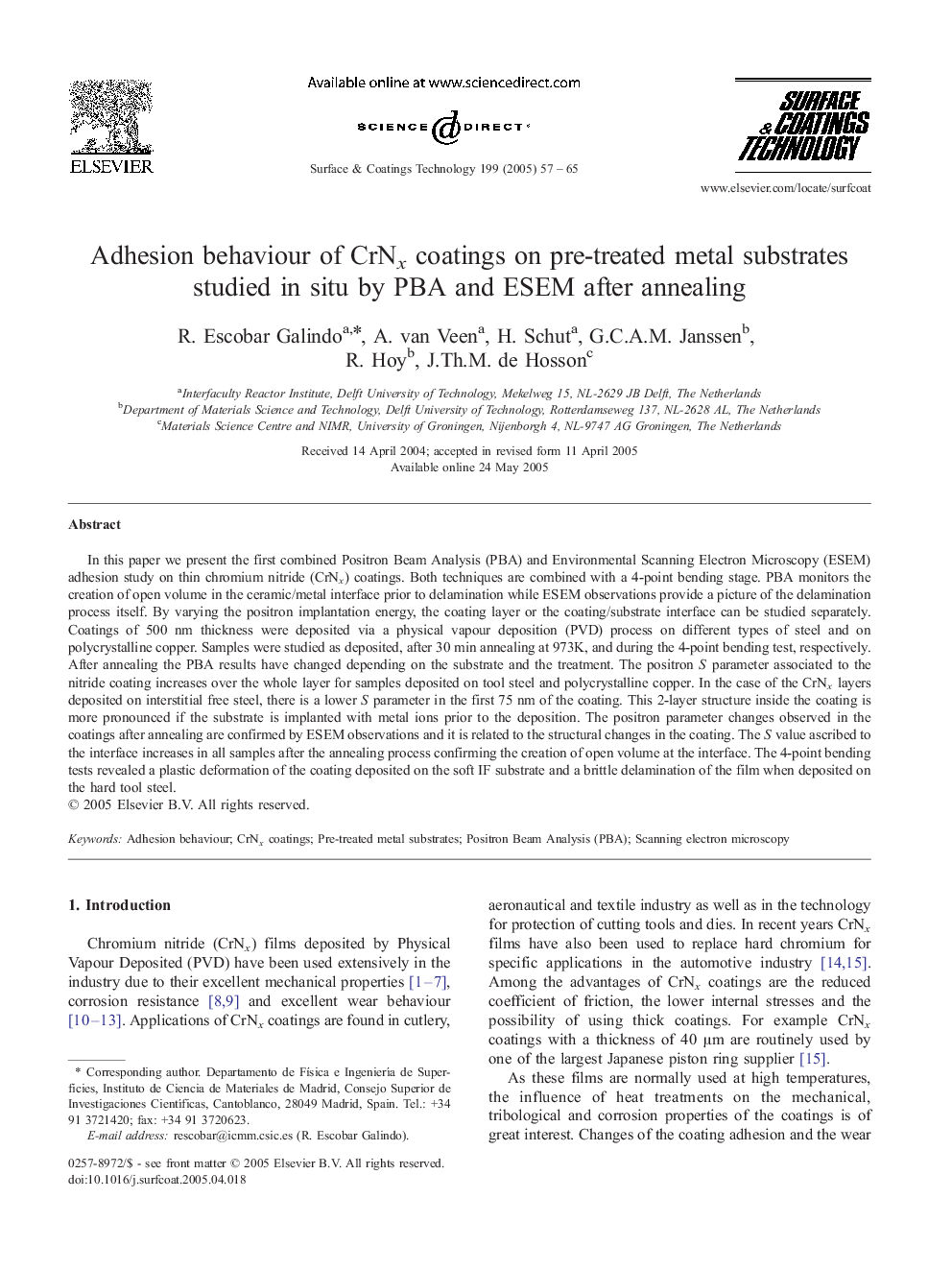| Article ID | Journal | Published Year | Pages | File Type |
|---|---|---|---|---|
| 10668834 | Surface and Coatings Technology | 2005 | 9 Pages |
Abstract
In this paper we present the first combined Positron Beam Analysis (PBA) and Environmental Scanning Electron Microscopy (ESEM) adhesion study on thin chromium nitride (CrNx) coatings. Both techniques are combined with a 4-point bending stage. PBA monitors the creation of open volume in the ceramic/metal interface prior to delamination while ESEM observations provide a picture of the delamination process itself. By varying the positron implantation energy, the coating layer or the coating/substrate interface can be studied separately. Coatings of 500 nm thickness were deposited via a physical vapour deposition (PVD) process on different types of steel and on polycrystalline copper. Samples were studied as deposited, after 30 min annealing at 973K, and during the 4-point bending test, respectively. After annealing the PBA results have changed depending on the substrate and the treatment. The positron S parameter associated to the nitride coating increases over the whole layer for samples deposited on tool steel and polycrystalline copper. In the case of the CrNx layers deposited on interstitial free steel, there is a lower S parameter in the first 75 nm of the coating. This 2-layer structure inside the coating is more pronounced if the substrate is implanted with metal ions prior to the deposition. The positron parameter changes observed in the coatings after annealing are confirmed by ESEM observations and it is related to the structural changes in the coating. The S value ascribed to the interface increases in all samples after the annealing process confirming the creation of open volume at the interface. The 4-point bending tests revealed a plastic deformation of the coating deposited on the soft IF substrate and a brittle delamination of the film when deposited on the hard tool steel.
Keywords
Related Topics
Physical Sciences and Engineering
Materials Science
Nanotechnology
Authors
R. Escobar Galindo, A. van Veen, H. Schut, G.C.A.M. Janssen, R. Hoy, J.Th.M. de Hosson,
